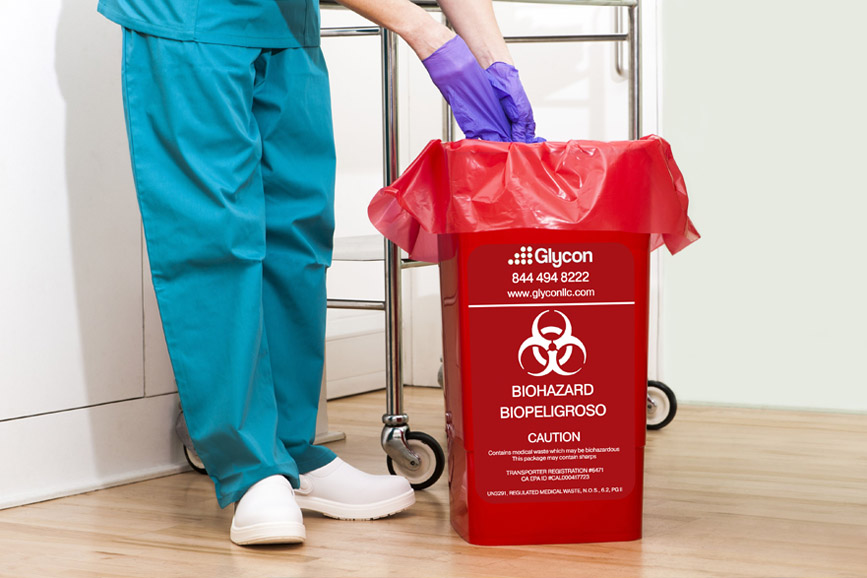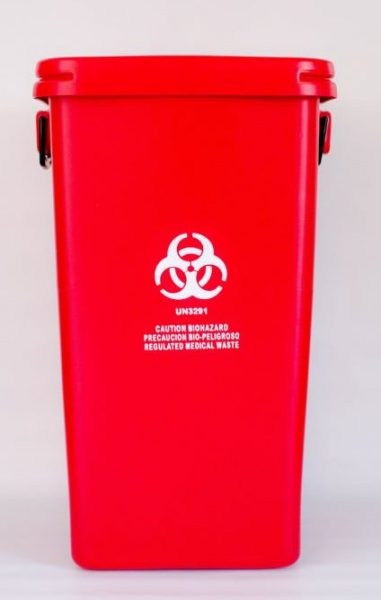Security First: Your Guide to Responsible Medical Waste Removal Services
Wiki Article
Stay Ahead of Rules: Specialist Advice on Medical Waste Disposal
In a world where the medical care sector is regularly developing, it is crucial for clinical facilities to stay ahead of guidelines when it comes to the proper disposal of medical waste. From comprehending the different classifications of medical waste to implementing the appropriate collection and partition techniques, this conversation will offer actionable tips and important understandings to help centers stay ahead of policies in the ever-changing landscape of clinical waste disposal.Understanding Clinical Waste Categories
Comprehending medical waste classifications is crucial for correct disposal and monitoring in medical care centers. Medical waste describes any kind of waste produced by health care activities that might position a danger to public health and wellness or the setting. It is crucial to classify clinical waste accurately to ensure its secure handling, transport, treatment, and disposal.There are numerous categories of medical waste that healthcare centers require to be knowledgeable about. One of the most common groups include contagious waste, pathological waste, sharps waste, pharmaceutical waste, and chemical waste. Each group has certain standards and policies for its proper administration and disposal.
Contagious waste consists of products contaminated with blood or various other physical fluids, such as gloves, dress, and laboratory societies. Pathological waste describes human tissues, organs, or body parts that need unique handling and disposal. Sharps waste consists of used needles, syringes, and other sharp things that can trigger injury and send infections. Drug waste makes up expired, unused, or polluted medicines that require cautious handling and disposal. Chemical waste includes solvents, disinfectants, and other chemical materials made use of in medical care facilities.
Staying Up-To-Date With Regulatory Changes
Remaining existing with regulative modifications is important for healthcare centers to make certain compliance and appropriate administration of medical garbage disposal. medical waste removal near me. With policies constantly progressing, it is vital for healthcare facilities to remain updated to stay clear of penalties, penalties, and prospective damage to the atmosphere and public health and wellnessTo stay in advance of regulative adjustments, medical care facilities should develop a system for surveillance and tracking updates. This can be done by registering for regulatory newsletters, participating in seminars and workshops, and actively joining market associations. Furthermore, centers must mark a staff member or team liable for staying informed and distributing details to pertinent stakeholders.
Regular communication with regulative agencies is likewise crucial. Healthcare facilities should establish partnerships with local, state, and federal agencies to ensure they recognize any kind of changes in regulations that might influence their waste management methods. This can be done through regular meetings, engagement in public comment periods, and positive involvement with governing companies.
Furthermore, health care facilities must take into consideration partnering with waste administration business that focus on medical waste disposal (medical waste disposal services with WasteX). These firms are usually fluent in the most current policies and can give assistance and support to make certain compliance
Implementing Correct Collection and Segregation Methods
To successfully handle medical waste disposal, medical care facilities need to develop proper collection and partition methods according to regulatory guidelines. Applying these methods makes sure the risk-free handling and disposal of potentially harmful materials, safeguards the environment, and reduces the danger of injuries and infections to healthcare employees and the public.
Proper collection and partition methods include using marked containers and identifying systems. Medical care centers need to supply clearly labeled containers for various kinds of clinical waste, such as sharps, contagious waste, pharmaceutical waste, and non-hazardous waste. These containers must be color-coded and clearly significant to avoid complication and promote very easy recognition.
Furthermore, medical care centers need to train their personnel on the proper procedures for accumulating and segregating medical waste. This consists of informing them on the different types of waste, the ideal containers to utilize, and the importance of following laws and guidelines. Regular training sessions and correspondence course should be performed to make certain that personnel participants remain updated on finest practices.
Moreover, healthcare centers need to develop a system for regular collection and disposal of medical waste. This may include partnering with accredited waste monitoring firms that focus on clinical garbage disposal. These companies will certainly make sure that the gathered waste is transported and gotten rid of in compliance with regulative requirements.
Picking the Right Disposal Techniques

Incineration is just one of the most efficient and common techniques for taking care of specific sorts of medical waste, such as pathological waste and sharps. It includes the controlled combustion of waste at high temperature levels, minimizing it to ash. Nevertheless, incineration can launch hazardous contaminants right into the air and add to air pollution.

Chemical treatment includes the usage of chemicals to neutralize the waste and sanitize. Microwave therapy makes use of microwave official statement energy to heat and disinfect the waste.
Ensuring Conformity With Documents and Training
After thoroughly thinking about the appropriate disposal methods for medical waste, medical care centers have to make sure conformity with regulations and minimize ecological impact by executing effective documentation and training procedures. This action is crucial in maintaining a sustainable and safe setting for both health care employees and the public.
Training is equally important in making sure compliance with laws. Healthcare employees that manage clinical waste ought to receive suitable training on waste partition, handling, and disposal procedures. This training should cover topics such as the appropriate use individual safety tools, recognition of different kinds of waste, and the appropriate disposal approaches for each and every waste category. By giving detailed training, health care facilities can encourage their staff to make enlightened choices and minimize the danger of incorrect garbage disposal.
Conclusion
To conclude, staying in advance of policies in medical waste disposal is essential for medical waste disposal services with WasteX healthcare centers. medical waste removal near me. Comprehending the various groups of medical waste, remaining updated with regulative modifications, applying correct collection and partition methods, picking the proper disposal approaches, and guaranteeing compliance through paperwork and training are all necessary actions. By following these standards, health care companies can properly handle and get rid of of medical waste in a liable and risk-free mannerFrom recognizing the various groups of clinical waste to executing the ideal collection and segregation techniques, this conversation will certainly give actionable ideas and valuable understandings to assist centers remain in advance of policies in the ever-changing landscape of check that clinical waste disposal. - medical waste disposal services with WasteX
The most typical classifications include contagious waste, pathological waste, sharps waste, pharmaceutical waste, and chemical waste. Healthcare facilities ought to supply clearly labeled containers for various types of medical waste, such as sharps, contagious waste, pharmaceutical waste, and non-hazardous waste. Healthcare facilities must establish a detailed system to videotape and track all facets of clinical waste disposal, consisting of types of waste generated, amounts, and disposal techniques used. Medical care employees who handle clinical waste must get ideal training on waste segregation, handling, and disposal procedures.
Report this wiki page